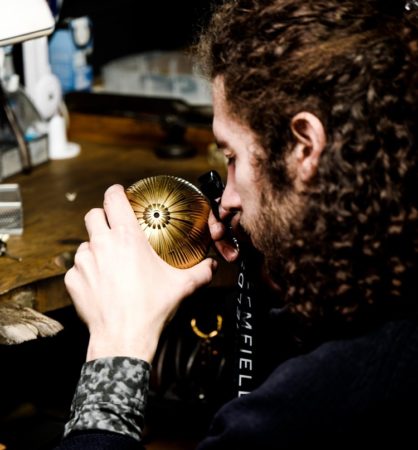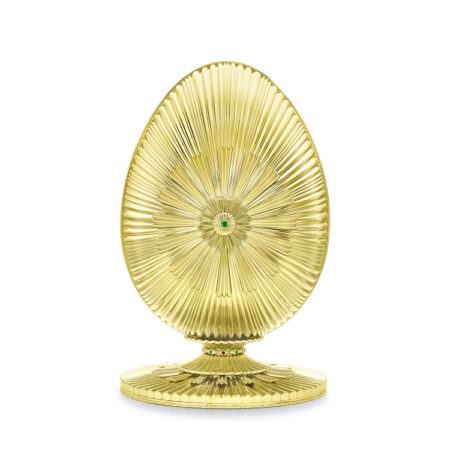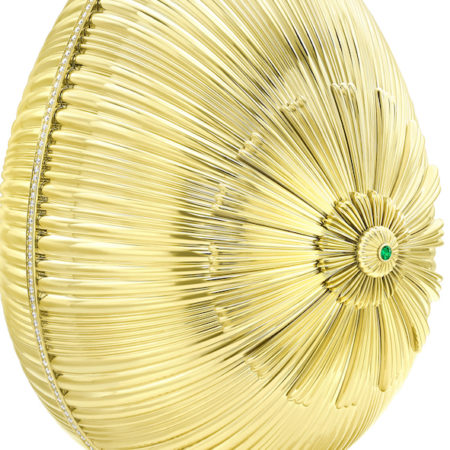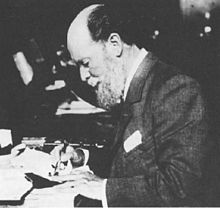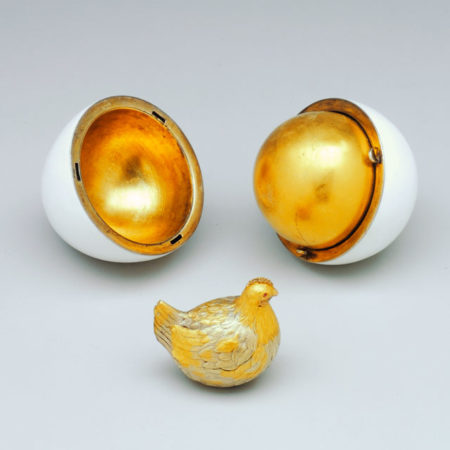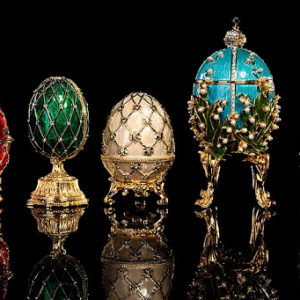To commemorate 100 years since Peter Carl Fabergé passed away, Fabergé has crafted an extraordinary, one-of-a-kind egg objet. Handcrafted in 18k yellow gold, and weighing an astonishing 10kg, this unique objet takes inspiration from the first-ever Imperial egg, the 1885 Hen Egg, as well as the 1887 Third Imperial Egg. The Centenary Egg, set to be a future heirloom, features gold fluting, a technique for which Peter Carl Fabergé was renowned, and which featured heavily in his early works of art. The egg is also set with spectacular Gemfields Mozambican rubies and Zambian emeralds, giving it a contemporary and colorful twist and complementing the white diamonds which line its circumference.
Let’s look at the illustrious history of Fabergé and the creator of the famous Easter Eggs:
Peter Carl Fabergé, also known as Karl Gustavovich Fabergé ( 30 May 1846 – 24 September 1920), was a Russian jeweller best known for the famous Fabergé eggs made in the style of genuine Easter eggs, but using precious metals and gemstones rather than more mundane materials.
Peter Carl Faberge was born in Saint Petersburg, Russia, to the Baltic German jeweller Gustav Fabergé .
In 1864 he embarked upon a Grand Tour of Europe. He received tuition from respected goldsmiths in Germany, France and England, attended a course at Schloss’s Commercial College in Paris, and viewed the objects in the galleries of Europe’s leading museums.
In 1872 at the age of 26 he returned to St. Petersburg and for the following 10 years, his father’s trusted work-master Hiskias Pendin acted as his mentor and tutor. Upon the death of Hiskias Pendin in 1882, Carl Fabergé took sole responsibility for running the company.
When Peter Carl took over the House, there was a move from producing jewellery in the then-fashionable French 18th century style to becoming artist-jewellers. Fabergé’s production of the very first so-called Fabergé egg, the Hen Egg, given as a gift from the Tsar to his wife Maria Fyodorovna on Orthodox Easter (24 March) of 1885 so delighted her that on 1 May the Emperor assigned Fabergé the title Goldsmith by special appointment to the Imperial Crown of that year. This meant that Fabergé now had full personal access to the important Hermitage Collection, where he was able to study and find inspiration for developing his unique personal style.
Take a look at the making of the Centenary Egg celebrating the legacy of Peter Carl Faberge.



